The Caviar Lite’s certainly weren’t Western Digital’s first 2.5″ drives, but they are among some of the earliest. Western Digital were facing stiff competition during the early-mid 90’s when concerning 2.5″ drives, leading to almost no further 2.5″ industry developments until the early 2000’s, with the company focusing on enterprise-grade models instead. Toshiba, Conner Peripherals, Seagate and IBM were examples of large 2.5″ market players, which made it hard for the remaining 3.5″ drive manufacturers to penetrate the mobile/portable space until much later, once the hard drive market had stabilised once more.
Nonetheless, let’s take a look at this early 2.5″ model from Western Digital!
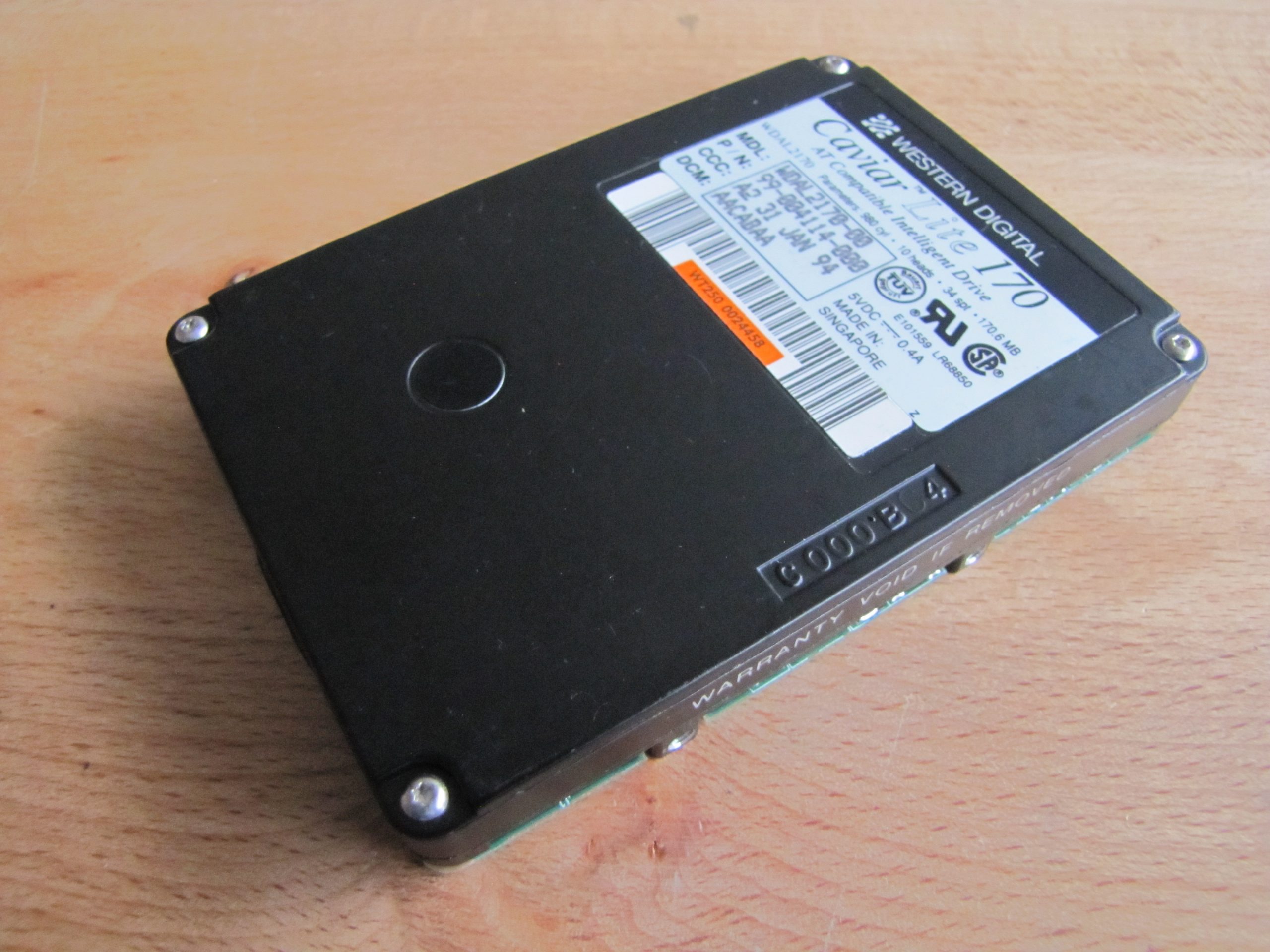
Drive Attributes -------------------------------------------- Western Digital Caviar Lite 170 WDAL2170-00 -------------------------------------------- Capacity 170MB Mfc Date 1994-01-31 Format 2.5" Height 19mm Interface PATA Platters 2 Heads 4 RPM 3600 --------------------------------------------
With two platters, four heads and a height of 19mm, these drives pale in comparison to the densities of drives available today. With a maximum capacity of 170.6MB, this equates to an approximate density of 42.65MB per surface.
These drives have fairly unique behaviour, where they refuse to spin-up until they receive a command signal from the IDE controller. Much like modern Deskstars which refuse to spin-up without a controller plugged in, these drives do the same.
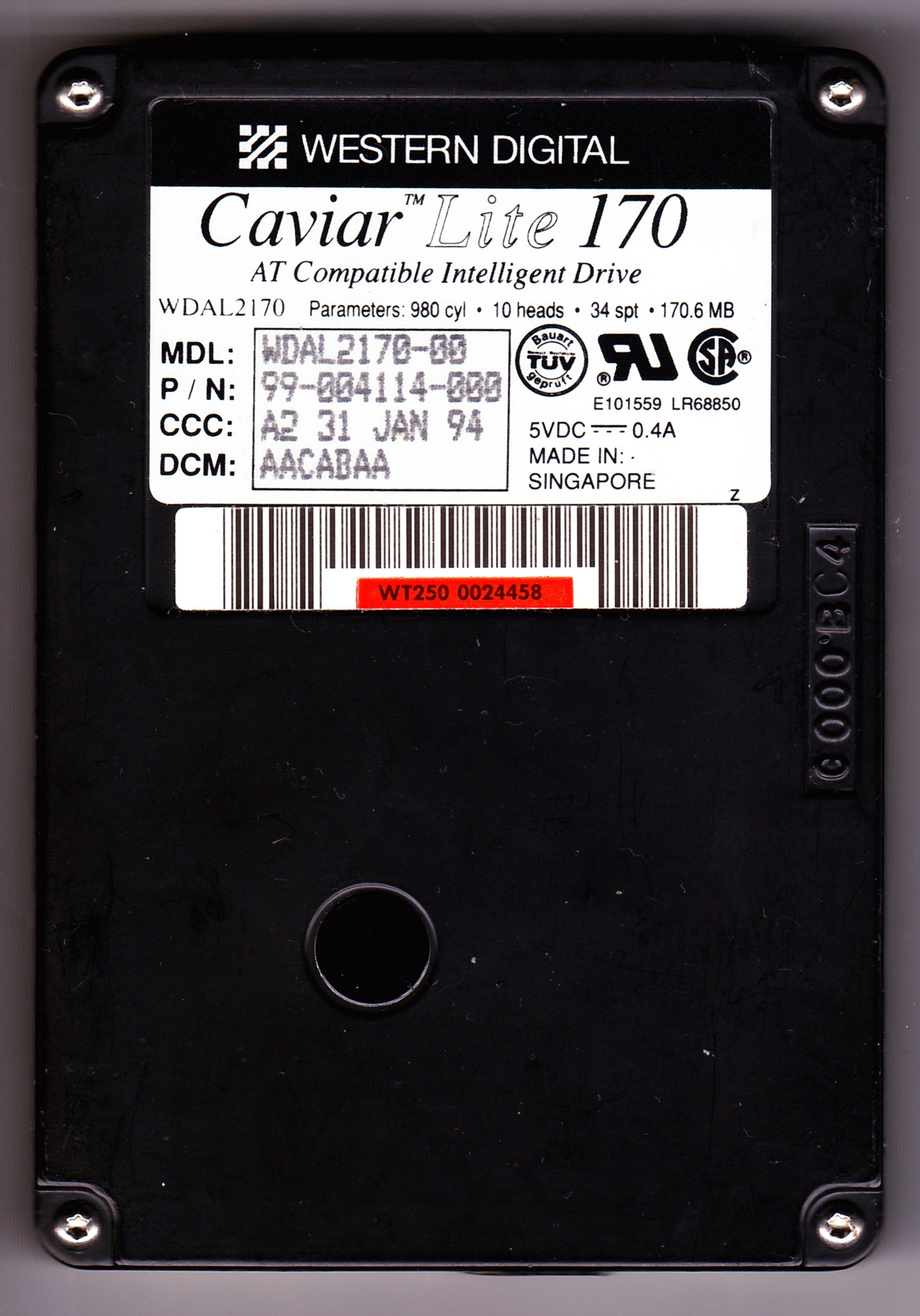
Like all Western Digital drives from this era, this drive was made in Singapore. There’s a tasteful splash of orange on this model, which is similar to that of desktop Caviar’s with the iconic coloured stripe. This particular drive was manufactured on the 31st of January in 1994.
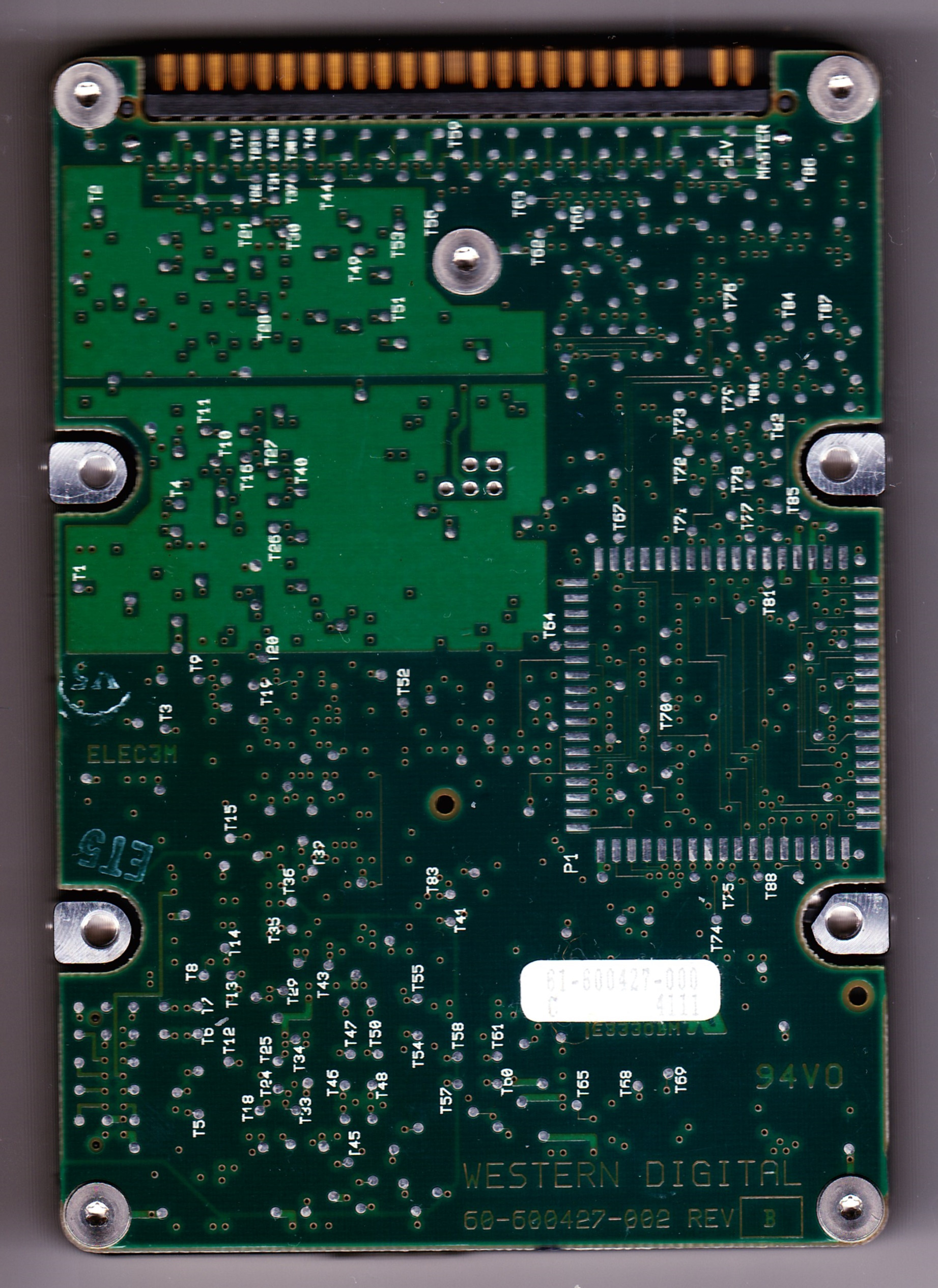
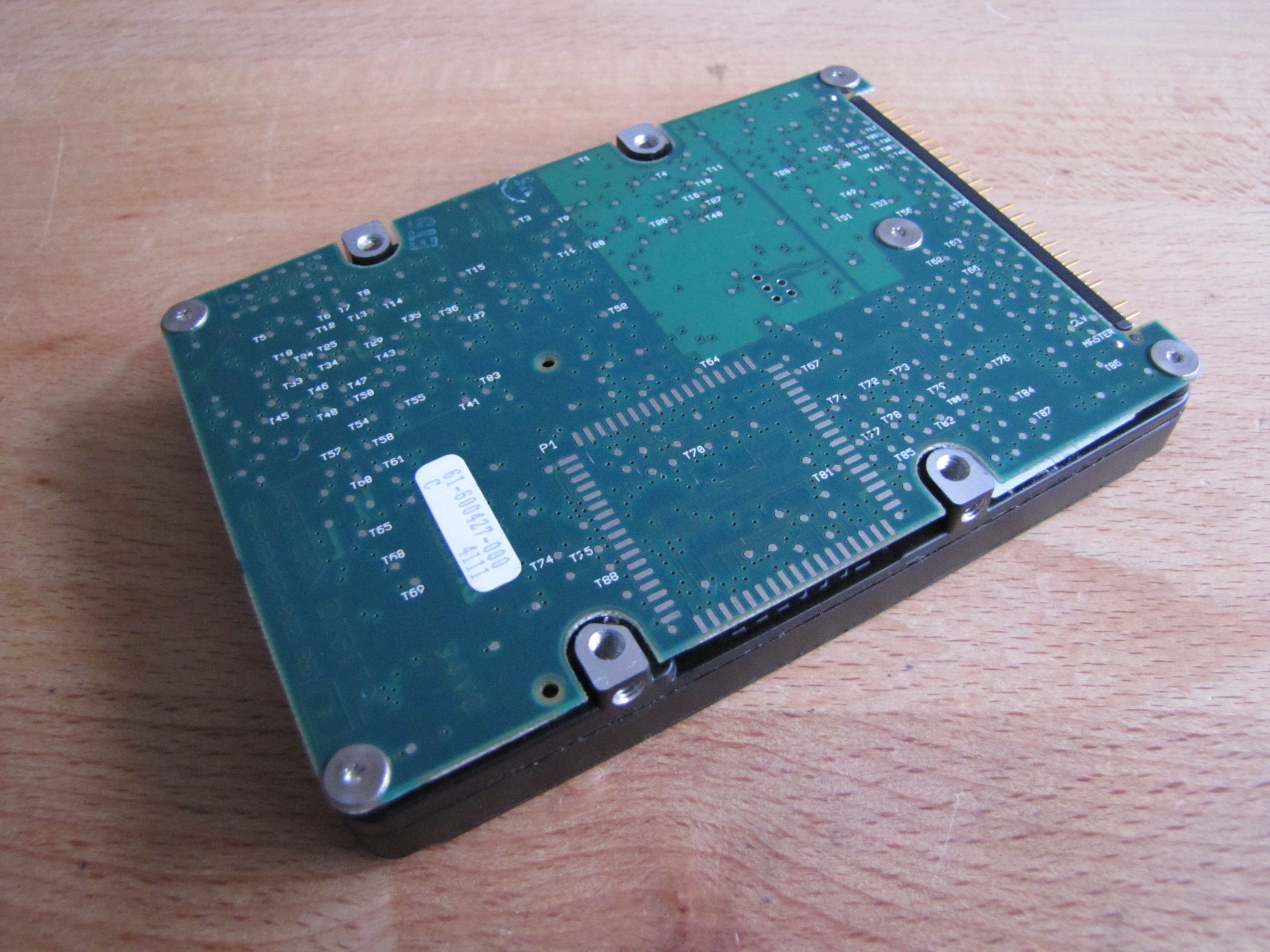
The underside is reasonably boring, but what stands out is Western Digital’s phenomenal pattern of flipping their PCB’s around to avoid ESD & component damage. Manufacturers such as Seagate and Toshiba still had 2.5″ drives with components facing downwards, which as strange as that might sound now, was fairly common during the early 90’s.
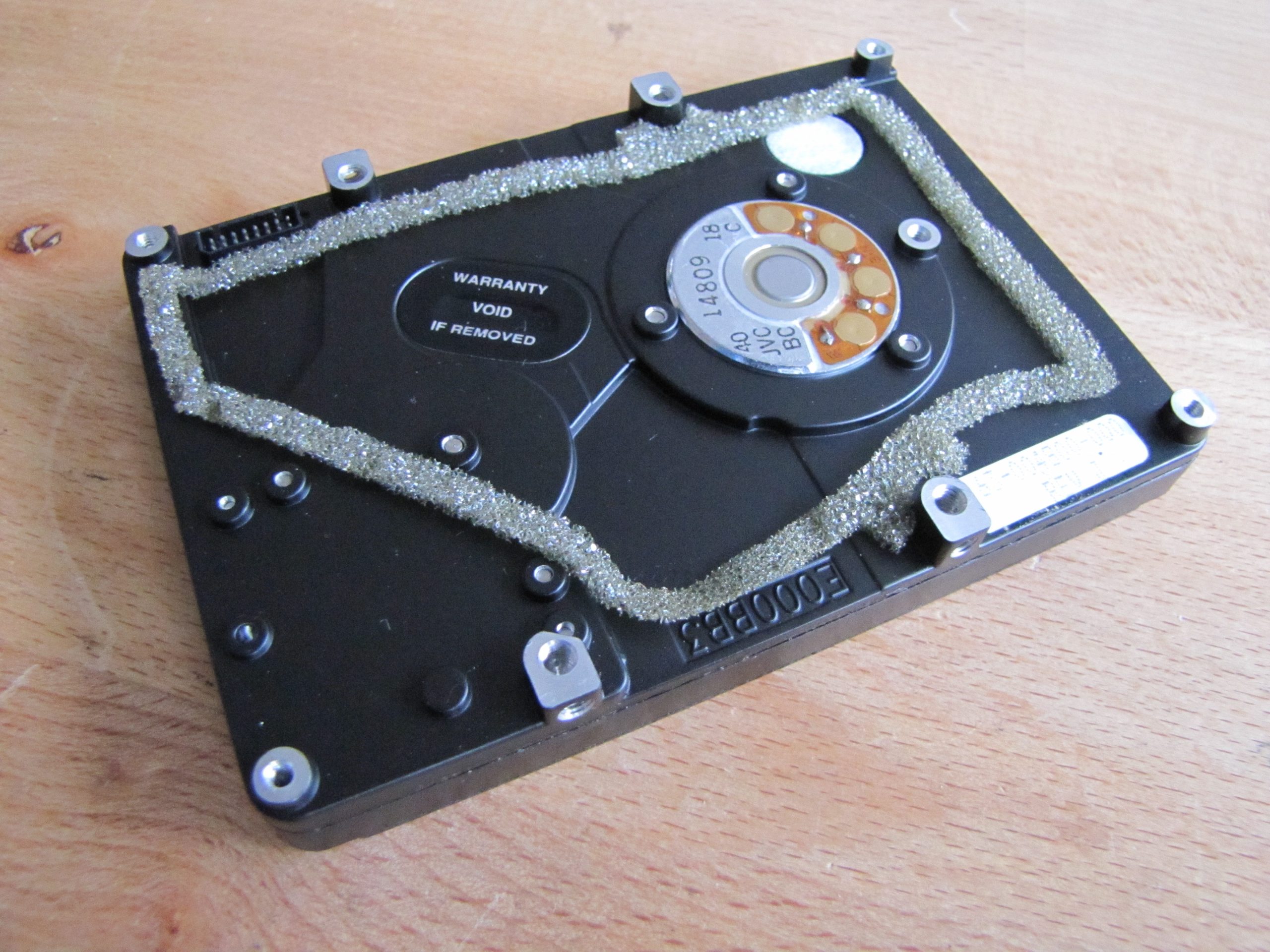
With the PCB removed, we get a look at the underside of these drives. The spindle-motor was manufactured by JVC, which were one of Western Digitals preferred OEM’s, even a decade after this drive was produced. The foam cut-out is a fairly strange one, but it does the job.
The head-stack interconnection header is a fairly strange one, being a socket, as opposed to a general pin-block. It does feel remarkably robust though, which is a testament to the standards Western Digital had for these at the time, before the great cheapening of 1996 onwards.
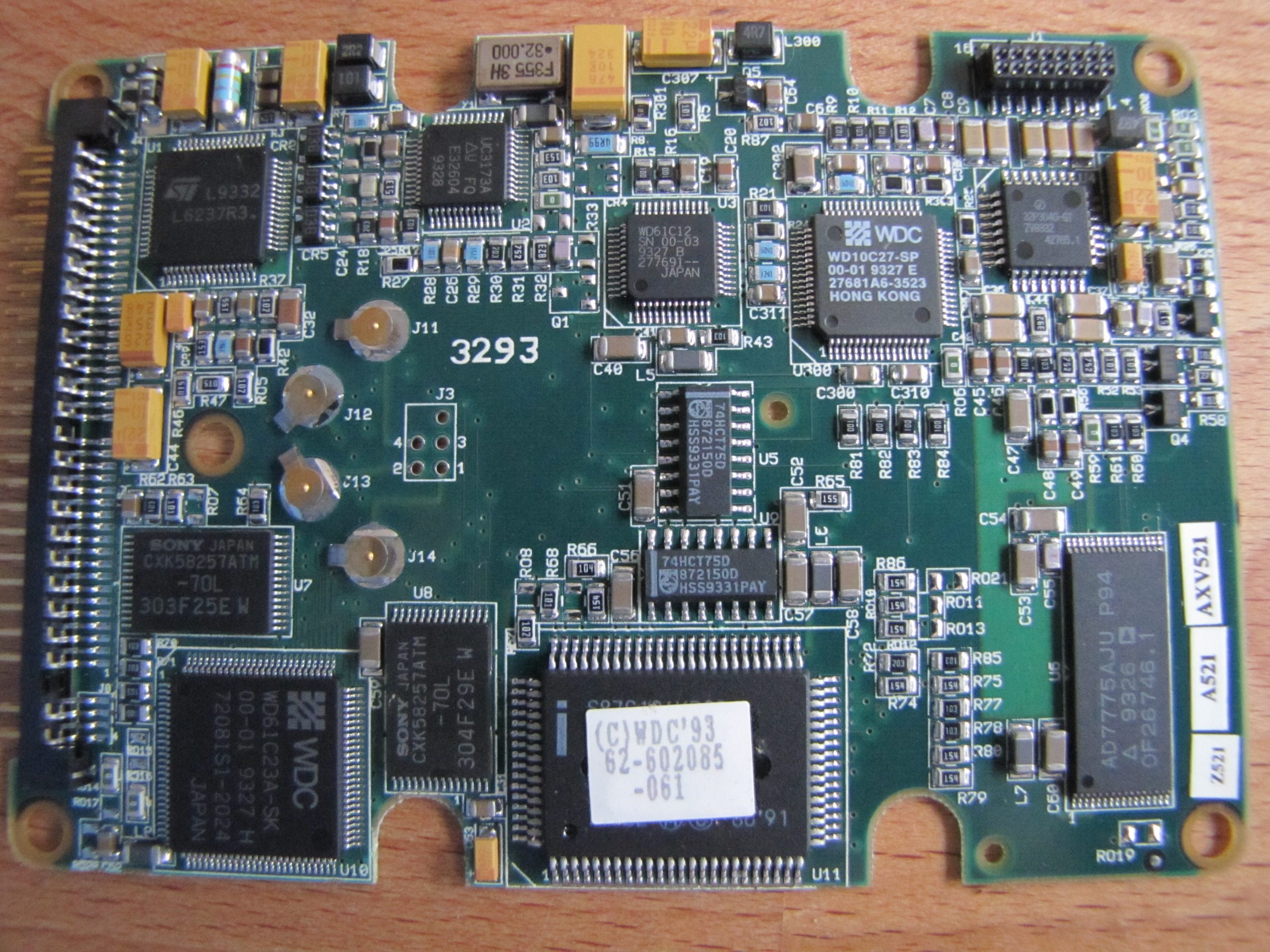
The PCB is fairly busy, as expected for such an early 2.5″ drive. If anything, it’s quite remarkable as to how close some IC’s are on this board to one another for the period.
The J8 header connector pin-out is as follows:
J8 Master/Slave/Cable Select Configuration
-------------------------------------------
+3-1+ Single Drive +3-1+ Master Drive
|o o| Configuration |X o| Configuration
|o o| |X o| (Dual Drives)
+4-2+ +4-2+
+3-1+ Slave Drive +3-1+ Cable Select
|o X| Configuration |X X| Configuration
|o X| (Dual Drives) |X X| (Dual Drives)
+4-2+ +4-2+
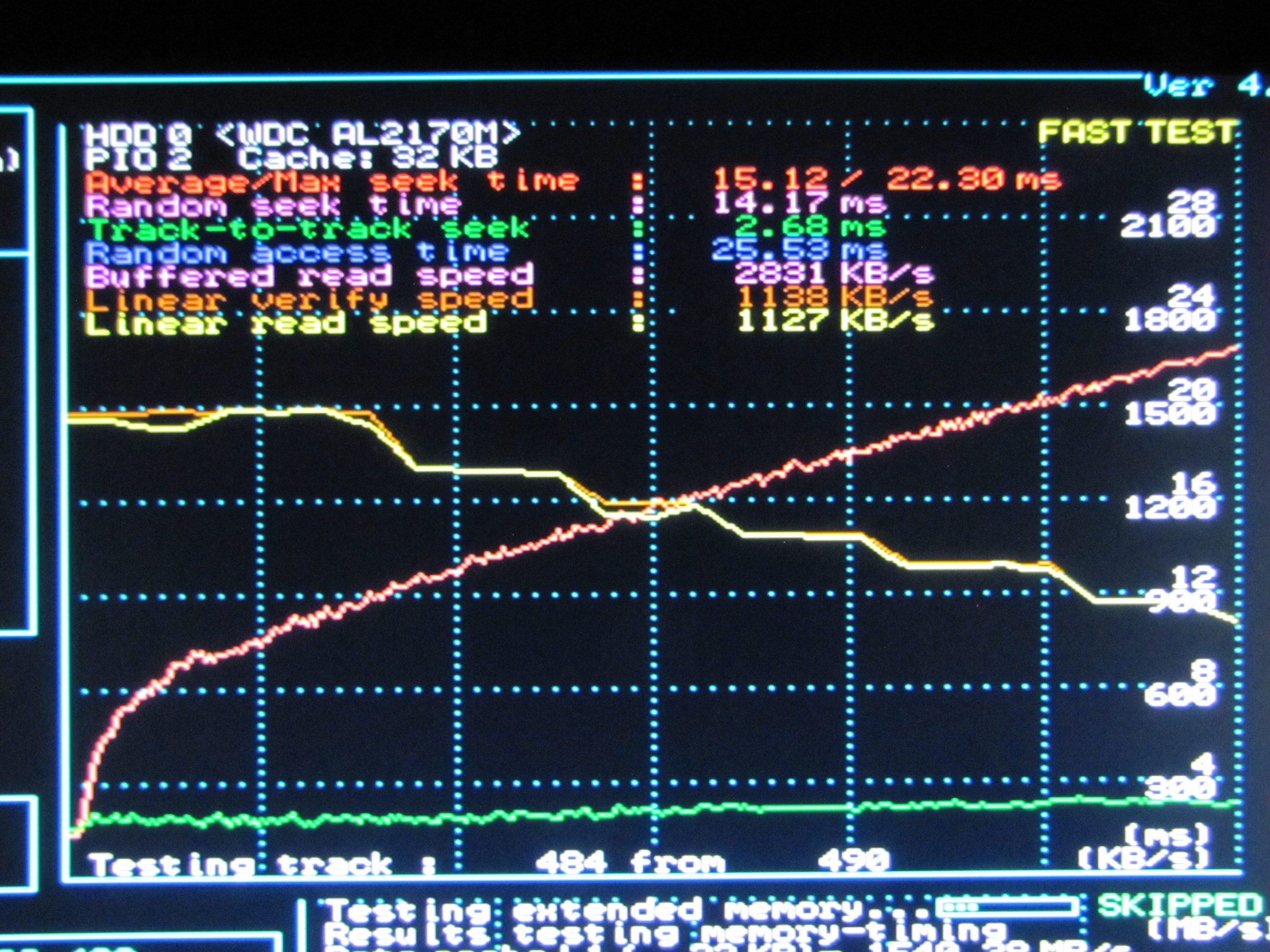
These drives perform well, as do most Caviar’s from the era. Furthermore, these have a near-identical seek-test to the standard 3.5″ black-cased Caviar’s from this era, which was quite surprising! Usually, most other manufacturers have completely different seek-test protocols, but clearly Western Digital was content with theirs.

This particular drive is fortunately in perfect health! Not a bad, nor slow, sector to speak of.
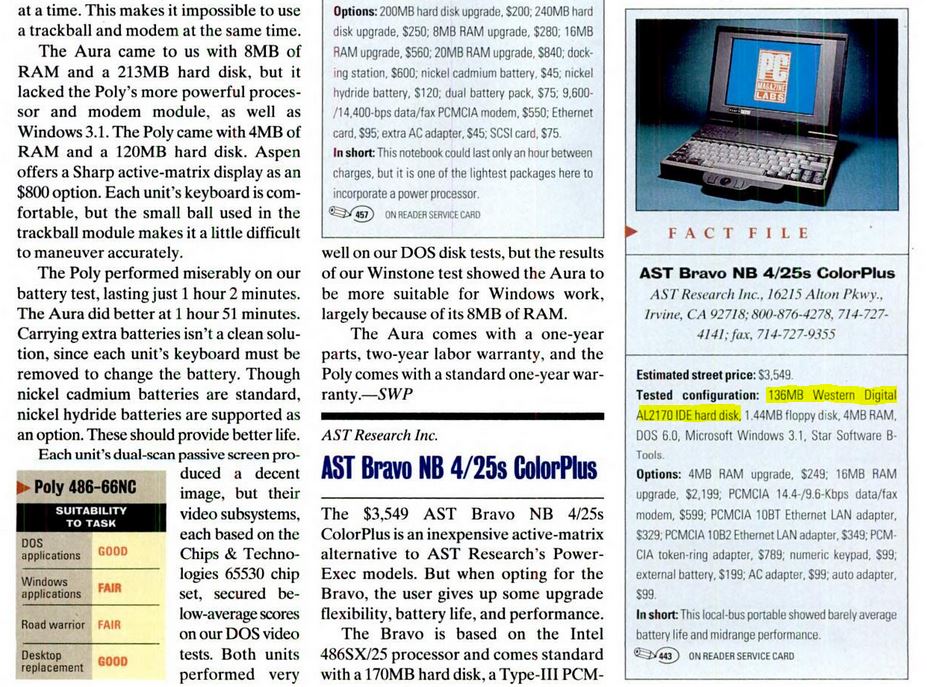
It’s unclear if Western Digital ever sold these drives to anyone aside from OEM’s, but one source available at least proves they were included with the AST Bravo NB 4/25s ColorPlus (which is quite the mouthful). Windows 3.1 is certainly a suitable OS to run on one of these.
While Western Digital’s early 2.5″ drives seem to be particularly uncommon, they are incredibly interesting models when they can be found. Hopefully this particular unit will continue to live on for the foreseeable future.
If you missed the video I made on this drive, you can find it here: